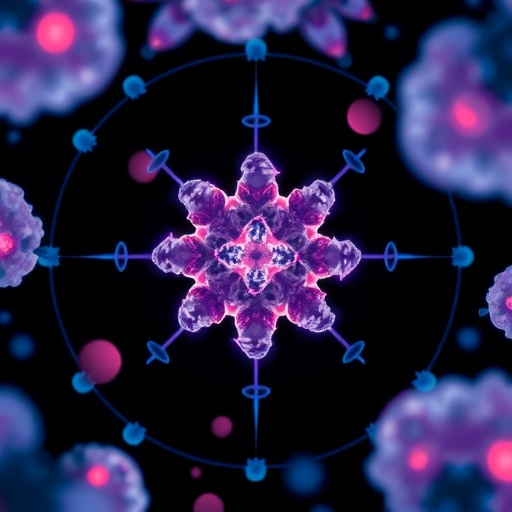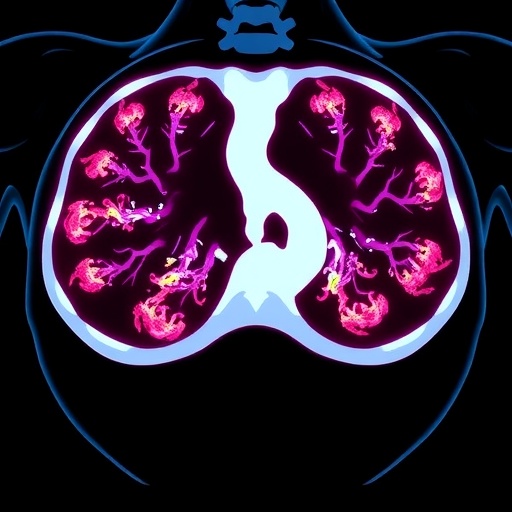
In recent years, the intricate relationship between immunotherapy and radiotherapy has garnered significant attention within the oncological research community. This emerging synergy holds particular promise for the treatment of locally advanced squamous cell skin cancer (SCC), a malignancy notorious for its aggressive behavior and resistance to conventional therapeutic modalities. A recent letter to the editor by He, Xu, and Chi, published in Medical Oncology, provides a critical commentary on the evolving integration of these two modalities, offering insights that could reshape current therapeutic algorithms and ultimately improve patient outcomes in this challenging clinical context.
Squamous cell skin cancer represents one of the most prevalent forms of non-melanoma skin cancers worldwide. While early-stage lesions can often be managed effectively with surgical excision, locally advanced cases present a therapeutic dilemma. In this setting, traditional radiotherapy has been a cornerstone treatment, leveraging its capacity to induce DNA damage and tumor cell death. However, radiotherapy alone often falls short in achieving durable local control or preventing systemic dissemination. This has catalyzed explorations into adjunctive strategies, particularly those harnessing the immune system’s capacity to recognize and eradicate malignancies.
Immunotherapy, notably immune checkpoint inhibitors targeting pathways such as PD-1/PD-L1 and CTLA-4, has revolutionized oncology by harnessing endogenous immune mechanisms to combat cancer. Its application in SCC has been bolstered by evidence demonstrating heightened tumor immunogenicity, resulting in relatively favorable responses to checkpoint blockade in select patient cohorts. Yet, monotherapy with immunotherapeutic agents does not guarantee universal efficacy, and resistance mechanisms remain a formidable hurdle. This underscores the rationale for combining immunotherapy with radiotherapy, aiming to capitalize on complementary mechanisms of tumor control.
.adsslot_YJaoObX1Pt{width:728px !important;height:90px !important;}
@media(max-width:1199px){ .adsslot_YJaoObX1Pt{width:468px !important;height:60px !important;}
}
@media(max-width:767px){ .adsslot_YJaoObX1Pt{width:320px !important;height:50px !important;}
}
ADVERTISEMENT
The letter from He et al. critically evaluates prior proposals advocating for a therapeutic algorithm that integrates immunotherapy and radiotherapy in managing locally advanced SCC. The authors underscore the nuanced interplay between these modalities, emphasizing the importance of timing, dosage, and sequencing in optimizing anti-tumor efficacy. They highlight emerging data suggesting that radiotherapy can modulate the tumor microenvironment to enhance immune responsiveness—an effect termed the “abscopal effect,” wherein localized radiation induces systemic anti-tumor immune responses.
In dissecting this concept, it becomes apparent that radiotherapy not only induces direct cytotoxic effects but also promotes release of tumor-associated antigens and damage-associated molecular patterns (DAMPs). These molecular changes prime dendritic cells and other antigen-presenting cells, facilitating activation and expansion of tumor-specific T cells. Consequently, the integration of immunotherapy could potentiate this immune activation, overcoming local and systemic immune evasion mechanisms deployed by the tumor.
However, He and colleagues caution against simplistic assumptions regarding the synergy of these treatments. They point out that radiation-induced immunosuppression, particularly through lymphodepletion or alteration of immune checkpoint pathways, could paradoxically blunt immunotherapeutic efficacy if not carefully managed. Therefore, a rigorous understanding of immunodynamics following radiation is paramount in designing combinatorial regimens.
The letter references recent clinical trials and preclinical studies that have attempted to delineate optimal strategies. For instance, fractionation schedules—the manner in which radiation doses are divided over time—emerge as critical variables. Preclinical models have demonstrated that hypofractionated radiation (delivering larger doses per fraction) may better stimulate immune responses compared to conventional fractionation, but the safety and tolerability in humans necessitate further investigation.
Moreover, the timing of immunotherapy initiation relative to radiation remains an active area of exploration. Simultaneous administration may capitalize on synergistic effects, but staggered approaches could mitigate overlapping toxicities and allow immune recovery. Biomarkers predictive of response and immune-related adverse events are urgently needed to stratify patients and personalize treatment plans.
He et al. also delve into mechanistic insights derived from tumor microenvironment studies. Locally advanced SCC is characterized by an immunosuppressive milieu rich in regulatory T cells, myeloid-derived suppressor cells, and inhibitory cytokines like TGF-β and IL-10. Radiotherapy has been shown to transiently remodel this landscape, potentially rendering the tumor more susceptible to immune attack. Agents targeting these suppressive components, when combined with immune checkpoint inhibitors and radiation, may further enhance therapeutic benefit.
Crucially, the letter advocates for multidisciplinary collaboration encompassing dermatology, radiation oncology, medical oncology, and immunology to translate these complex findings into clinical practice. They stress the importance of integrated clinical trials with robust correlative studies to unravel the biological underpinnings and optimize treatment frameworks.
From a patient-centric perspective, integrating immunotherapy and radiotherapy warrants careful consideration of treatment-related toxicities. Immune-related adverse events, ranging from dermatitis to pneumonitis, may be potentiated when combined with radiation-induced tissue damage. Rigorous monitoring and early intervention protocols are essential to maximize safety without compromising efficacy.
In conclusion, the commentary by He, Xu, and Chi substantiates the promising yet intricate paradigm of combining immunotherapy with radiotherapy in locally advanced squamous cell skin cancer. By dissecting the mechanistic crosstalk, clinical potential, and challenges inherent in this approach, the authors contribute a timely and thought-provoking analysis that could influence therapeutic strategies and stimulate further research efforts.
The fusion of radiotherapy’s direct cytotoxic precision with immunotherapy’s systemic immune activation heralds a new frontier in oncologic treatment. This approach exemplifies the shift from conventional monotherapies towards integrated, multi-modal regimens designed to overcome tumor heterogeneity and resistance. As the field progresses, ongoing studies will elucidate optimal protocols, identify predictive biomarkers, and refine patient selection to fully realize the clinical benefits of this combination.
In the broader context of cancer treatment, the lessons learned from SCC may find applicability across diverse tumor types where angiogenic and immunosuppressive pathways intersect. The dynamic tumor-immune ecosystem is an evolving landscape, and combinatorial therapies such as those discussed in this letter represent the vanguard of personalized medicine.
Ultimately, the integration of immunotherapy and radiotherapy is a compelling testament to the power of translational research bridging laboratory discoveries with bedside innovation. The oncology community eagerly anticipates forthcoming data that will validate and extend these insights, moving closer to more effective and durable treatments for patients confronting the formidable challenge of locally advanced squamous cell skin cancer.
Subject of Research: Integration of immunotherapy and radiotherapy in the treatment of locally advanced squamous cell skin cancer
Article Title: Letter to the editor: comment on “Integration of immunotherapy and radiotherapy in a therapeutic algorithm for locally advanced squamous cell skin cancer”
Article References:
He, R., Xu, H. & Chi, H. Letter to the editor: comment on “Integration of immunotherapy and radiotherapy in a therapeutic algorithm for locally advanced squamous cell skin cancer”. Med Oncol 42, 427 (2025). https://doi.org/10.1007/s12032-025-02971-3
Image Credits: AI Generated
Tags: adjunctive cancer treatment strategiesDNA damage and tumor cell deathenhancing patient outcomes in cancer therapyimmune checkpoint inhibitors PD-1 PD-L1 CTLA-4immunotherapy and radiotherapy integrationimmunotherapy for skin cancerlocally advanced squamous cell skin cancer treatmentnon-melanoma skin cancer prevalenceoncological research advancementsovercoming resistance in cancer treatmentradiotherapy limitations in oncologytherapeutic algorithms for cancer





